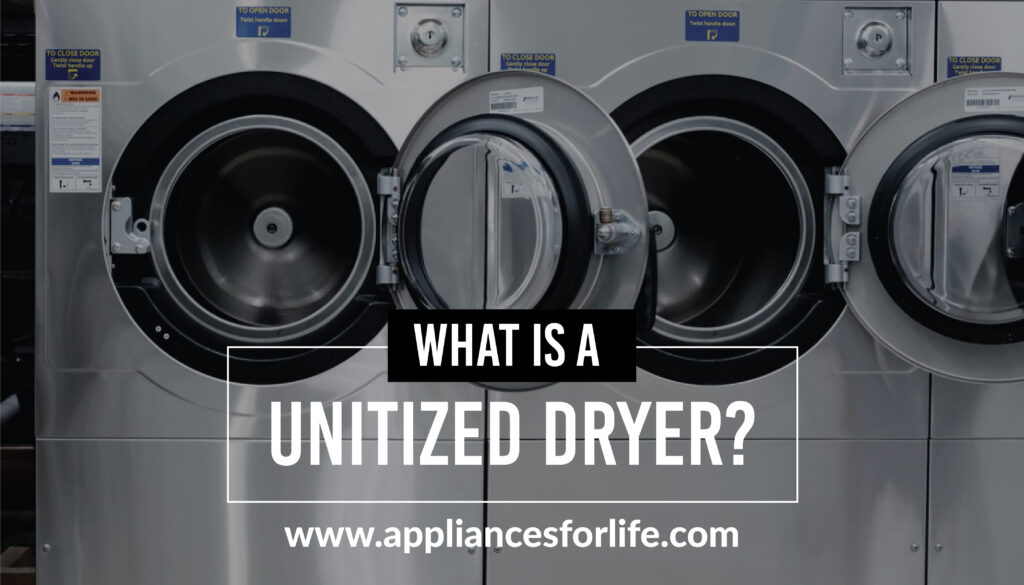- What is a unitized dryer? This is where the washer and dryer are combined. It is a single machine that washes and dries your clothes.
- Clothes are usually put in a dryer after running their cycle in a washing machine. There are several types of clothes dryers available in the market.
- Because it doesn’t require a venting duct, a condenser clothes dryer is ideal if you don’t have a ventilation system in your house.
- The result is a highly efficient process that consumes much less energy than other dryers. The difference in energy consumption can be as much as 50%.
- On paper, the best type of dryer is the heat pump condenser dryer. This dryer is the most energy-efficient, and no venting is needed.
Every single dryer has its advantages, the one that works best for you will depend on the needs of your family and the amount of space available in your home.
What is a unitized dryer? This is where the washer and dryer are combined. It is a single machine that washes and dries your clothes. It’s distinguished from the stackable washer and dryer because the stackable variety involves stacking or joining two separate appliances, a washer, a dryer, and a user interface. The unitized dryer is more economical because it costs less than the stackable variety. It is more compact and occupies less space.
What types of dryers do we have?
A clothes dryer, also known as a tumble dryer, is an appliance for removing moisture from laundry. Clothes are usually put in a dryer after running their cycle in a washing machine. There are several types of clothes dryers available in the market.
- Gas dryer: This dryer uses gas to generate the heat needed to dry clothes. Gas dryers use less electricity to power the appliance and heat the clothes faster, ensuring that the clothes dry quicker. This type of dryer requires a ventilation system which means that you need to have a lot of space. Because a gas dryer is energy efficient, it tends to be pricier than other models. However, energy efficiency comes with cost savings in the long term.
- Vented dryer: These are the most common dryers. They dry clothes by heating the air and sending it to the drum. Once the hot air becomes too moist, it is sent out of the system via vents and replaced with fresh air. These dryers are usually affordable, but they are high maintenance. Because they generate moist air, they can make the laundry room oppressively humid. The biggest advantage of vented dryers is that they are affordable and widely available. Among the different dryer types, they are also known to have the largest capacity. On the downside, vented dryers are energy-intensive and require proper ventilation.
- Condenser dryer: Dryers normally use a heating element to increase the machine’s internal temperature. A condenser dryer works differently. It pulls air from around the surrounding environment; this air is then passed through a condenser, where it is heated. The dryer then sends this hot air to the drum to dry your laundry. Condenser dryers tend to have lower temperatures inside the unit. Therefore, they typically use more time to dry clothes than other vented dryers. Because it doesn’t require a venting duct, a condenser clothes dryer is ideal if you don’t have a ventilation system in your house. It is much gentler on your laundry because it uses lower temperatures. Your clothes are bound to last longer. However, the condenser dryer is anything but energy-efficient, and your electricity bill is bound to be higher than if you opted for other models.
- Heat pump condenser dryer: Heat-pump operated units are the latest drying technology. This dryer uses a heat pump instead of a condenser to remove the moisture from clothing. It relies on a refrigerant system made up of hot and cold coils. This machine works by drawing air from around the unit, then sending it through the heat pump or drum. The collected air from the pump is condensed on the cold side, releasing moisture and generating heat. At the same time, the lingering air is reheated by the hot coils for further use. As the air recirculates back to the drum, its temperature is raised. The result is a highly efficient process that consumes much less energy than other dryers. The difference in energy consumption can be as much as 50%. Unlike other dryers, a heat pump condenser dryer doesn’t eject hot, humid air into the laundry room. Other advantages include its energy efficiency, its lower operating temperatures that help preserve your clothes, and the fact that it is ventless, making it ideal for small spaces. The heat pump condenser dry holds the distinction of being the most expensive dryer in the pack.
- Top load dryers: Most dryers load from the front. Top load dryers are filled from the top. They have their control panel toward the back of the machine like a top-loading washer. There are budget-friendly models in this style for those who prefer top loaders.
- Front load dryers: If you have a front-loading washing machine, you’ll most likely prefer a dryer that matches this style. Front-loading dryers are normally stackable. Units come equipped with a window on the door to match the corresponding washer and the control panel on the front of the machine. These models usually are more expensive because they are packed with higher-end finishes and features.
- Stacked and stackable dryers: These are dryers that have the option of being put on top of the washing machine via a stacking kit. Stackable dryers are a great solution when your priority is to save space. They are ideal for those living in small apartments and those who can access a laundry closet but not a laundry room. Stackable dryers can be unstacked and placed side-by-side if later down the road you have more space. Stacked or unitized laundry centers, on the other hand, are usually two compartments—a washer and a dryer that are attached and cannot be separated or unstacked.
- Steam dryers: This is equipped with an additional steam drying option. They can still dry using heat, but additionally, these units also use hot, moist air that may help reduce wrinkles on clothing. You can use steam dryers to refresh lightly used clothing without having to do an entire load of laundry, and you can find them in gas or electric models.
- All-in-one combination washers and dryers: This unit has a washer and dryer within the same drum. They are ideal for the smallest and tightest of spaces, where even a stacked washer and dryer won’t do. Because of their compact design, they are easy to install practically anywhere, and they don’t require any venting.
Out of all the above, which dryer is the best one?
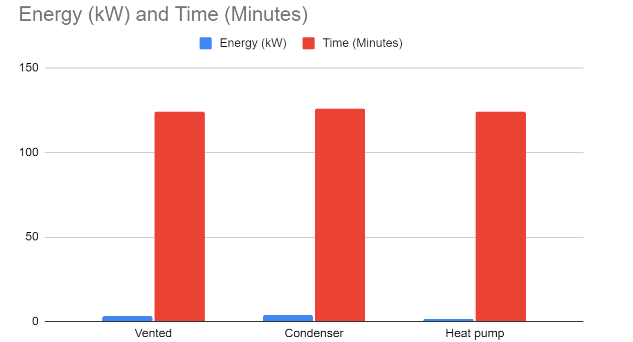
Above is the energy use comparison for different types of dryers. Credit: How to buy the best clothes dryer | CHOICE
What is the best type of dryer?
On paper, the best type of dryer is the heat pump condenser dryer. This dryer is the most energy-efficient, and no venting is needed. Heat pump dryers don’t create hot air or moisture, so they’re perfect for apartments. They use less than half the energy of a vented or condenser dryer, so the higher purchase price is recouped on power bill savings over the dryer’s lifetime. However, the best type of dryer will depend on various factors, the most important being an individual’s preference. Every single dryer has its advantages, the one that works best for you will depend on the needs of your family and the amount of space available in your home. A large-capacity model will work for you if you have a large household that runs through laundry quickly. An energy-efficient model like a heat pump dryer will be better if energy efficiency is particularly important to your family.
How to buy the best dryer:
Are you mulling on how to buy a quality dryer? There are several factors to consider before purchasing a clothes dryer. These include:
- How often will you be using your dryer?
- The kind of laundry you normally dry.
- The space and ventilation that are available to you.
- How the dryer’s electric consumption impacts your energy bills
- Your environmental footprint.
Here are dryer features to consider when trying to answer the question of what is the best dryer for you.
- Venting/Ducting: The moist, hot air from the dryer has to be removed from your laundry efficiently. No moisture will help to prevent dripping walls and mold-ridden ceilings. You can set up your dryer near an open window or use an exhaust fan to do the job. An open window may not be possible for everyone, in which case you’re likely to need a venting kit. Not all dryers come with venting kits; it’s an optional extra for others. At the same time, not all venting kits suit all situations. To ensure you get what you need, discuss the installation with the sales staff. Remember, some dryers only have an exhaust vent at the front and can’t be ducted. So if your laundry has poor ventilation, check that the model is vent-kit compatible before buying.
- Wall-mountable or stackable dryers: You will save space if you mount your dryer on the wall or stack it on a front-loading washing machine. Please be advised that some manufacturers only sell stacking kits as an optional extra. At the same time, they may only stack on their brand of a washing machine. Not all dryers are created equal, and only vented dryers can be wall-mounted. Condenser and heat pump dryers are too heavy and must be put on the floor or stacked on a washer.
- Filters: You need a dryer with a front-fitted lint filter that is easy to access. The main reason is that the lint filter needs to be cleaned regularly for your dryer to operate efficiently and to reduce the risk of fires.
- Reverse tumbling: Check if the dryer is fitted with reverse tumbling. Here, the drum reverses the tumbling direction at regular intervals for more even drying and minimizing tangling. Increasingly, and to improve energy efficiency, manufacturers prefer to forego reverse tumbling by running everything – the compressor, fan, and drum rotation, off the one motor – to reverse the drum means changing everything else, which is not the same good for the appliance. While chasing lower energy consumption is admirable, it’s coming at the expense of functionality and performance. An increasing number of models don’t reverse, or the drum only changes for 10 to 90 seconds, resulting in laundry wadding up into a tight ball and not drying properly. The best dryers should make a reasonable balance between functionality and performance.
- Drying rack: Consider if you want a drying rack for your laundry or not. Some dryers come with a stand. You can mount that rack inside to hold items you don’t want to tumble, including gym shoes or delicates.
- Auto program: This unit automatically detects when the load has dried. Auto programs will switch off the dryer when it detects the laundry is completely dry. The auto program saves energy and protects laundry from the damaging effects of overdrying. In practice, they are a hit and miss depending on the size of the load you’re drying.
- Woollens program: This is a low-heat program. It is designed to dry certain wool or wool-blend clothing items. It is advisable to keep in mind that not all woolen garments can be safely dried in the dryer, even with a woolens program. Take time to read the garment care tag carefully and make sure it says that it’s safe to do so.
- Delicates program: A delicates program is a gentle, low-temperature mode for drying delicate fabrics. Just as with the wool above, please carefully read the care instructions on the garment. If it doesn’t say it’s safe to put in a dryer, you should air dry it instead.
- Extra dry program: Some standards dictate that clothes dryers must be able to achieve a six percent or better moisture content, and if you’re using your dryers’ auto program, it will turn itself off once it reaches this point. If you’ve used a dryer with an auto function, your clothes still feel damp. Your dryer stops at this point because it makes your clothes easier to iron, prevents over-drying and damaging delicate fabrics, and improves energy efficiency. If you still want your clothes extra dry, say, for sealing them up in a bag for winter, an extra dry function can remove a little more moisture. This additional dry function gives you more flexibility but isn’t necessary for day-to-day use.
- Delay time function: A delay start or delay time function allows you to set your dryer to start at a specific time, for example, when everyone is asleep.
- Anti-crease function: This setting prevents creases from settling into clothes by continuously, gently tumbling your clothes after drying has finished.
- Child lock controls: This function is designed for child safety and prevents children from operating the unit. The machine will not run unless a certain button combination is pressed.
- Auto-start and child safety: Auto-start units will automatically turn on and start drying clothes when you shut the door. Though convenient, it carries a safety risk for small children. Who can easily climb into the dryer and shut the door behind them. Dryers with this function are not recommended for those with children or regular young visitors.
Top 10 dryers:
Here are the top 10 dryers of 2022 according to The 10 Best Clothes Dryers of 2022
- Best Overall, Electric – Smart Top Load Electric Dryer with Extra Power Button – 7.4 cu. ft. White MED6230HW | Maytag
- Best Overall, Gas – 7.5 cu. ft. FlexDry™ Gas Dryer in Black Stainless Steel Dryer – DVG60M9900V/A3 | Samsung US
- Best Budget – Insignia – 6.7 Cu. Ft. 12-Cycle Electric Dryer – White
- Best Splurge – Front Load Gas Dryer – 8.0 Cu. Ft. ELFG7337AW ElectroluxNA
- Best High-Capacity – LG DLGX8101V: 9.0 cu. ft. Mega Capacity Gas Dryer w/ Steam™ Technology | LG USA Business
- Best Stackable – Large Capacity Top Load Dryer with Wrinkle Control – 7.0 cu. ft. White MEDC465HW | Maytag
- Best Compact – Miele W1 Classic & Miele T1 Classic
- Best Energy-Efficient – GE 3.6 Cu. Ft. Stackable Electric Dryer with Portable White DSKP333ECWW – Best Buy
- Best With Steam – 7.4 cu. ft. Smart Electric Dryer with Steam Sanitize+ in White Dryers – DVE52A5500W/A3 | Samsung US
Frequently asked questions:
Q: Are clothes dryers safe?
Over the last couple of years, dryers have come with overheat detection. These dryers turn off when the temperature gets too hot. However, it is advisable to take extra precautions for your safety. These include:
- Follow the instructions in the manual.
- Plug the dryer directly into the wall socket. Not into an extension cord or adaptor.
- Allow good ventilation around your dryer.
- Childproof the dryer environment
Q: How can I tell if I overload a clothes dryer?
For clothes to dry, they need to tumble. Tumbling means the laundry is free-falling through the air in the dryer. How well it falls varies by type of laundry. A big blanket will need more space than socks. When you pack clothes too tightly in a dryer, they will not have room to fall. Make sure there is space.
Q: Why does the clothes dryer create dust?
What you see as dust is lint, and it comes from your clothes. The rubbing of your clothes inside the dryer against each other makes them erode. This erosion comes out of the dryer exhaust and is trapped as lint.
Overall. A dryer is a convenient accessory in the home, especially if you have laundry. Sometimes the weather will not be conducive for hanging clothes.
28 MINUTES
ESTIMATED TIME DESIGNING AND UPLOADING THIS ARTICLE
10 HOURS 26 MINUTES
ESTIMATED TIME RESEARCHING AND WRITING THIS ARTICLE
You Might Also Like

Best Thermoelectric Wine Cooler For Your Home
Introduction Whether you are a wine connoisseur who can separate the wheat from the chaff with regards to the best of wine brands or know nothing beyond the pleasant feeling that comes with relishing wine, one thing is certain: the importance of a wine
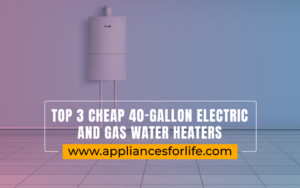
Cheap 40 Gallon Electric and Gas Water Heater
Top 3 Cheap 40-Gallon Electric and Gas Water Heaters If you’re in the market for a new water heater, you may be wondering whether to choose an electric or gas model. Here, we’ll compare the two types of heaters and give you our top picks

China has always had a good reputation for modernizing home appliances. China is now one of the biggest exporters of quality home appliances worldwide, with several Chinese manufacturers making waves across the globe. In this article, we’ll discuss some of the world’s best China home
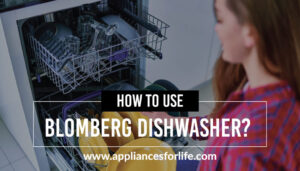
The best 5 ways to Use a Blomberg Dishwasher
The worldwide acceptance of dishwasher units has revealed that they are not just home appliances for luxury. Dishwashers do not just help you turn those heaps of heavily soiled kitchenware into sparkling dishes/cutlery, they also make sure that they are more than 90 percent germ-free.
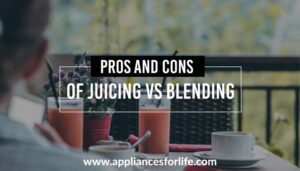
Pros and Cons of Juicing vs Blending
Blenders quickly amassed a lot of popularity when people began to realize how much they could help over their overall health statuses. The same can be said of juicers, but unfortunately, they don’t enjoy the same popularity blenders enjoy because, although they function similarly, blenders

Make the Best Use of Cooking on Your Induction Cooktop
Learning and understanding how an induction cooktop works is complicated if you really don’t know what you are talking about. Many people tend to shy away from the idea of induction cooktops because they feel like the cooking methods are different and so are the

HOW TO KEEP FOODS COLD AT A PARTY
Planning a party is never easy. You have guests coming through to show their love and support and you always want to make sure it is worthwhile for them. In this article, we’ll be talking about one of the best ways to keep your guests
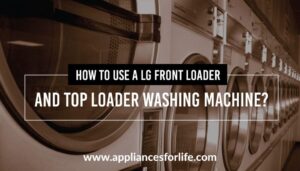
How to Use an LG Front Loader and Top Loader Washing Machine?
Washing machines are a great appliance to have around the house because they make our domestic chores easier and more convenient, most particularly doing laundry. For many years now, people have stayed loyal to the brands they believe have always given them everything they’ve ever
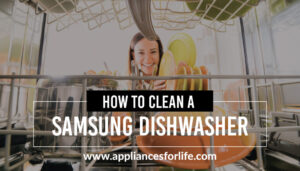
How to clean a Samsung dishwasher?
Regular cleaning improves performance and reduces unnecessary repairs. It is advisable to do this cleaning regularly. When you notice your unit accumulates stains, debris, and other marks both inside and outside, it is time to schedule a routine cleaning. It is recommended that before performing

Best Vitamix Blenders for Home Use
Vitamix has achieved that “cult-hero” status on the global blender market, which is why Vitamix blenders are so popular today. This article discusses the best Vitamix blenders for home use. Blenders are rarely mentioned when people discuss the most vital appliances in their homes, demonstrating

